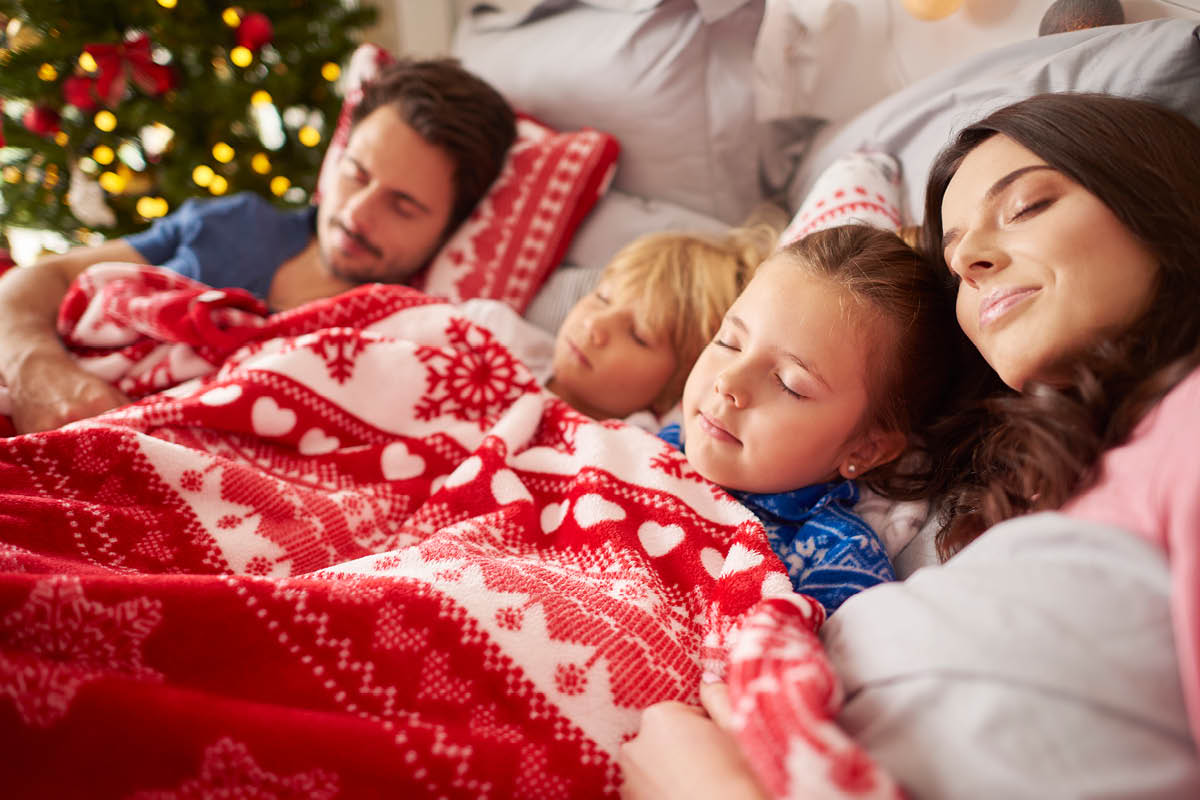The Medical Minute: Seven ways to get enough sleep this holiday season

Aunt Jessica is visiting from the west coast. Twelve gifts need wrapping. Three party invites just arrived by text message. And now little Timmy’s classmates expect fresh-baked cookies by 7 a.m.
Between shopping, entertaining, socializing and traveling, the holidays bring plenty of stressors for adults and children. “And more stress increases the chances that people’s sleep cycle will be disrupted,” said Susan Calhoun, a child psychologist and pediatric behavioral sleep medicine specialist with Penn State Health.
Getting the right amount of sleep with sleigh bells jingling and sugar plums dancing may seem impossible. But with just a little planning, children and adults can stay well-rested, savor the holidays and skip the drowsiness.
According to Dr. Venkatesh Basappa Krishnamurthy, an adult psychiatrist and sleep medicine expert at Penn State Health, two forces drive a person’s sleep cycle. One is sleep pressure, the natural process that makes us sleepier the longer we stay awake during the day. The second is circadian rhythm, our natural sleep-wake schedule.
“Our normal bedtime triggers the release of the hormone melatonin in our brain,” Basappa Krishnamurthy said. “Most people’s melatonin levels rise during bedtimes, plateau overnight and decrease by early morning.”
For that reason, adults and children should do everything possible to keep their sleep and wake times normal. Calhoun and Basappa Krishnamurthy offer seven ways to accomplish this:
- Plan party times. People should consider how long they want their party to last, and then plan a start time that won’t interfere with a set bedtime. “For example, people who go to bed at 10 p.m. and plan a five-hour party should set the party start time for 4 p.m.,” Basappa Krishnamurthy said. “Then they can enjoy the party and still have an hour for sleep prep.”
- Get travel ready. It may be tempting to drive overnight when traffic is lighter. But don’t do it if it interrupts a normal sleep cycle. “Driving requires vigilance and cognitive skills,” Basappa Krishnamurthy said. Instead, drive in the morning when people are awake, alert and protect nighttime sleep. People flying to different time zones should start adjusting their wake-sleep times by 20-30 minutes every three to four days for one to two weeks prior to the trip, thereby adjusting their circadian rhythm faster after arrival.
- Write it down. Overwhelmed by the amount of holiday to-dos? Write them down 30 minutes to an hour before bedtime to relieve stress and clear the path for good sleep. Concerned about talking to a difficult family member? Write it down too and develop coping strategies to ease anxieties in advance.
- Curb the caffeine. It’s a no-no six to eight hours before bed. That includes coffee, sodas, energy drinks and foods containing caffeine, such as chocolate cake.
- Keep the lights out. Keep a child’s bedroom as dark as possible, using only a small night light (if needed) away from the head of the bed. And make sure kids turn off all electronics an hour before bed. “The light emitted from electronic devices stimulates the brain to stay awake,” Calhoun said.
- Maintain an ideal sleep environment and routine. Keep the indoor bedroom temperature around 67 degrees. Maintain a child’s bedtime routine, such as taking a bath followed by a bedtime story. And make sure children sleep in their own bed—and not in their parents’ bed.
- Stay well. Exercising in the early morning releases neurotransmitters that can keep you awake throughout the day. Maintaining as healthy a diet as possible will help you avoid holiday weight gain and potential consequences, such as sleep apnea and excessive sleepiness.
Related news
- The Medical Minute: Toy safety tips for the holiday — and year-round
- The Medical Minute: Many different factors can trigger holiday depression
- Five Tips for holiday health that don’t include skipping the milk and cookies
The Medical Minute is a weekly health news feature produced by Penn State Health. Articles feature the expertise of faculty, physicians and staff, and are designed to offer timely, relevant health information of interest to a broad audience.
If you're having trouble accessing this content, or would like it in another format, please email Penn State Health Marketing & Communications.
